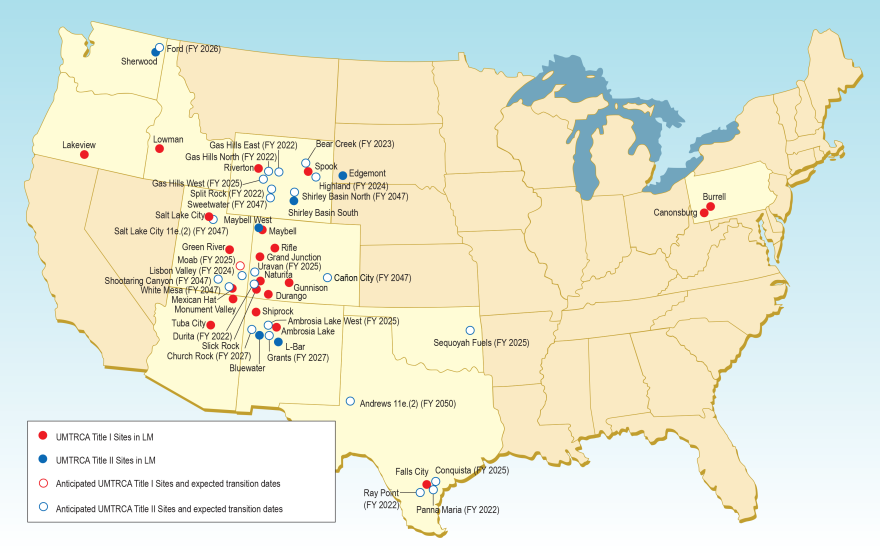Wyoming lawmakers are exploring the possibility of storing spent nuclear fuel rods to bolster the state budget as coal revenue becomes less reliable. Such storage would be temporary, they say, before the material is sent to a permanent repository.
James Anderson, a state senator in Wyoming, says the gist would be to store containers of spent fuel at old uranium mines, but the idea is only half-baked. At this point, he and other legislators on a committee created to explore the issue are mostly compiling a list of questions.
“What we don’t know is how much they’ll pay, how many they want to have stored, what kind of conditions we have to store them in,” he says. “We don’t know anything, so we’ve got a list of questions for the [Department of Energy] to answer for us.”
The Department of Energy currently stores its spent nuclear fuel at three sites, including one in our region, the Idaho National Laboratory.
“The previous administration, they had a war on coal and it really hit our state hard,” says Anderson. “We have a lot of revenue that’s missing from coal and we expect more of it to be missing in the future, so we’ve got to find some way to bring in funds to the state.”
Spent nuclear fuel aside, the Mountain West is home to 22 sites where radioactive material was formerly processed or tested, and that are now monitored by the Department of Energy’s Office of Legacy Management. That includes four places in Nevada and Colorado where underground nuclear explosions took place, about 15 former uranium ore processing sites which now contain uranium tailings and other contaminated material in disposal units, and a disposal site in Grand Junction, Colorado, that will continue to accept low-level radioactive material until 2023 or until it’s full -- whichever comes first.
Another 20 sites in the Mountain West are expected to join the list between now and the year 2047, once they’ve been cleaned up.
This story was produced by the Mountain West News Bureau, a collaboration between Wyoming Public Media, Boise State Public Radio in Idaho, KUER in Salt Lake City, KUNR in Nevada and KRCC and KUNC in Colorado.







